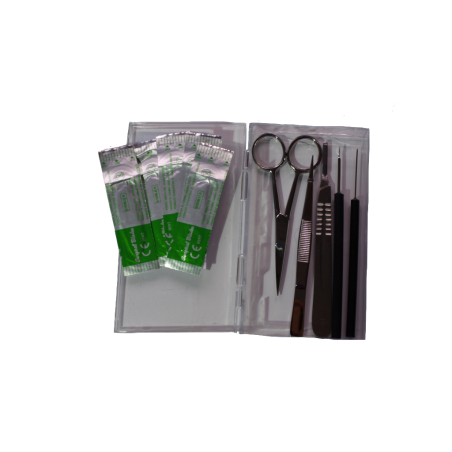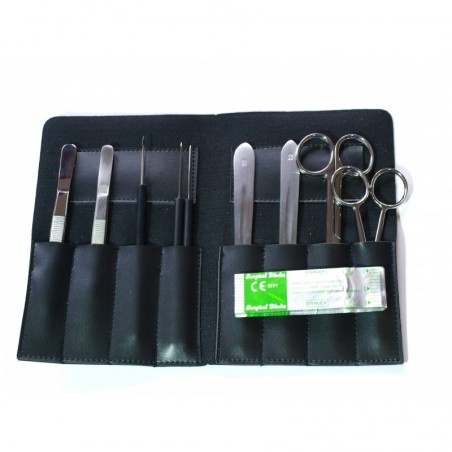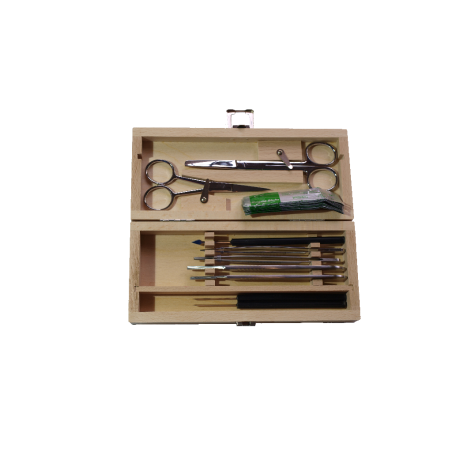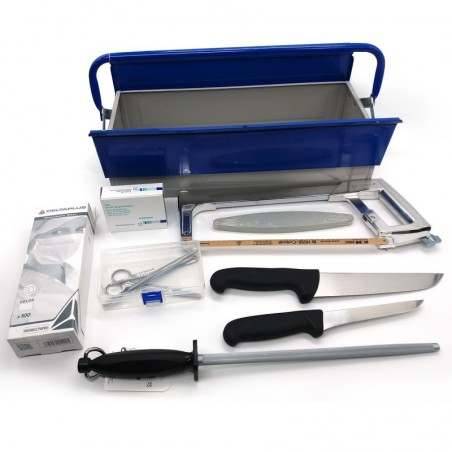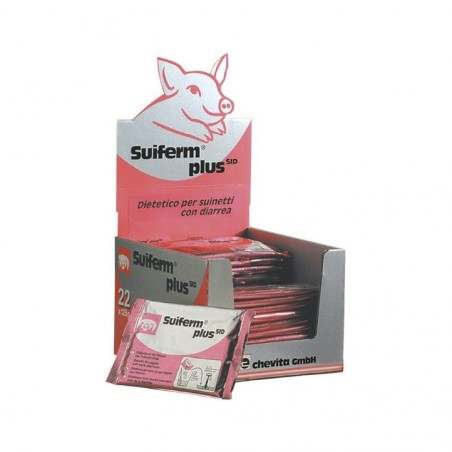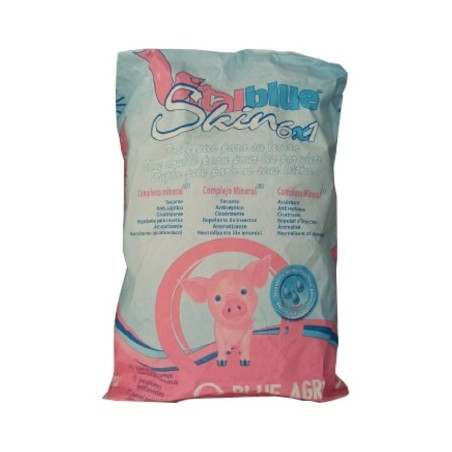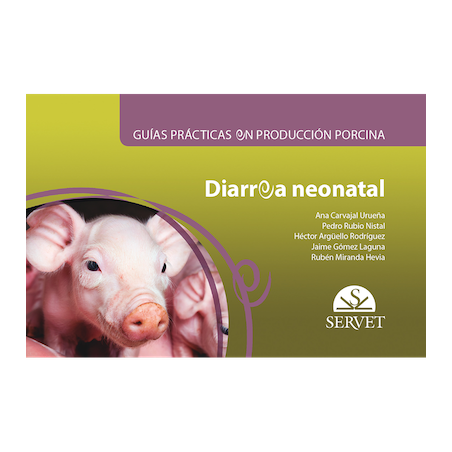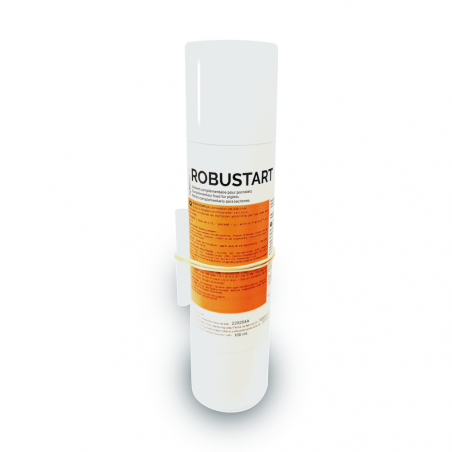Neonatal diarrhoea is a multifactorial condition commonly present on pig farms and leads to economic losses due to the increased morbidity and mortality of piglets. It affects piglets in the first week of life. Neonatal diarrhoea also represents a significant concern regarding antibiotic usage in suckling piglets (Nielsen et al., 2022).
A number of infectious agents have been associated with neonatal diarrhoea in piglets. In Europe, Escherichia coli (E. coli), Clostridium perfringens (C. perfringens) type C and type A, Clostridioides difficile (C. difficile), Enterococcus hirae (E. hirae), coronaviruses, rotaviruses and Cystoisospora suis might be of significance (Jacobson, 2022).
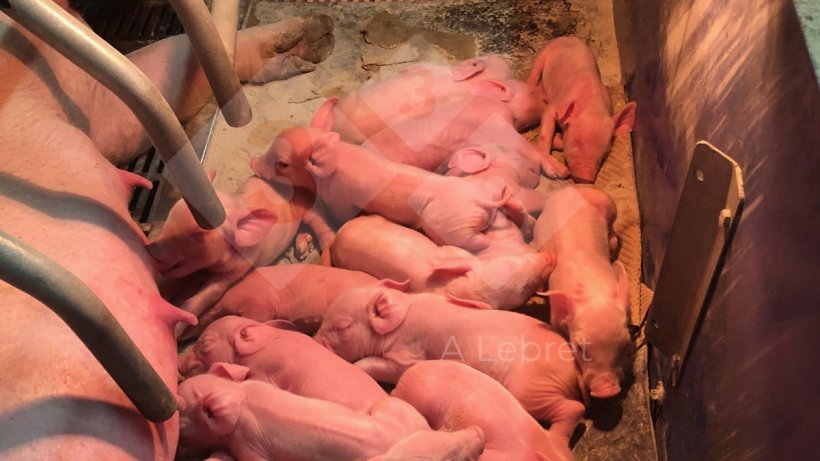

In our consultancy, in France, to reach a diagnosis as accurately as possible, the procedure is standardised: at least two piglets under one week of age must be submitted alive to the pathology unit of a laboratory in the presumed acute stage of the disease and without previous treatment of the piglet or the dam for necropsies and analyses. The procedures that must be performed are:
- Cultures
- MALDI typings
- PCRs
- Microscopic evaluation of intestinal lesions
In the herds managed by our consultants, during the last three years, C. perfringens type A was the most frequently detected pathogen (61.3%), followed by Enterococcus hirae (43.4%), rotavirus type A (RVA) (38.7%), rotavirus type C (11.3%) and enterotoxigenic Escherichia coli (3.8%) (Table 1).
Table 1. Rate of detection of bacterial agents and rotaviruses in samples from diarrhoeic piglets.
| Pathogen | Piglets (n=106) | Farms (n=38) | ||
|---|---|---|---|---|
| Number | % | Number | % | |
| Bacterial agents isolated by culture | ||||
| Clostridium perfringens type A | 65 | 61.3 | 28 | 73.7 |
| Enterococcus hirae | 46 | 43.4 | 22 | 57.9 |
| Enterotoxigenic Escherichia coli | 4 | 3.8 | 3 | 7.9 |
| Rotaviruses detected by PCR | ||||
| Rotavirus type A | 41 | 38.7 | 19 | 50.0 |
| Rotavirus type C | 11 | 11.3 | 4 | 10.5 |
No case of neonatal haemorrhagic and necrotic enteritis caused by C. perfringens type C was diagnosed during this period. The clinical importance of enterotoxigenic E. coli and C. perfringens type C decreased during the three last decades thanks to vaccination programmes against both pathogens (82% and 75% of the piglet’s dams are vaccinated in our practice) and the improvement of hygiene procedures.
In France, C. difficile is probably an unlikely cause of neonatal diarrhoea (associated microscopic lesions have been rarely observed by swine pathologists and the pathogen is rarely cultured).
Coinfections and neonatal diarrhoea
Moreover, we observed that 50.9% of piglets necropsied for neonatal diarrhoea were positive for more than one pathogen. Particularly, C. perfringens type A was isolated simultaneously with at least another pathogen in 64.6% positive cases (Table 2). The most frequent association detected was that between RVA and C. perfringens type A (17.9% of piglets submitted). Finally, several studies have suggested that Porcine Reproductive and Respiratory Syndrome Virus (PRRSV) contributes to the development of neonatal diarrhoea, particularly those that demonstrate PRRSV-infected macrophages in the intestinal lamina propria (Gordon, 1992; Yaeger et al, 2002). The PRRSV status of the herd must be checked when dealing with neonatal diarrhoea outbreaks in farms.
Table 2. Simultaneous detection of enteric pathogens.
| Simultaneous detection of pathogens | Piglets (n=106) | |
|---|---|---|
| Number | % | |
| Rotavirus type A (RVA) + Clostridium perfringens (C. perfringens) type A | 19 | 17.9 |
| C. perfringens type A + Enterococcus hirae (E. hirae) | 9 | 8.5 |
| RVA + C. perfringens type A + E. hirae | 7 | 6.6 |
| Rotavirus type C (RVC) + C. perfringens type A | 5 | 4.7 |
| RVA + E. hirae | 4 | 3.8 |
| C. perfringens type A + Escherichia coli (E. coli) | 3 | 2.8 |
| RVA + RVC | 2 | 1.9 |
| RVC + C. perfringens type A + E. hirae | 2 | 1.9 |
| C. perfringens type A + E. hirae + E. coli | 1 | 0.9 |
| RVA + RVC + C. perfringens type A | 1 | 0.9 |
| RVC + E. hirae | 1 | 0.9 |
The diagnosis of neonatal diarrhoea is one of the most challenging ones in daily pig practice. There are two issues:
- first, pig veterinarians might detect more than one enteric pathogen and have to prioritize advice for the prevention of one of these pathogens;
- secondly, the current understanding of some pathogens such as C. perfringens type A, E. hirae, RVC and C. difficile as significant pathogens is difficult to substantiate, although vaccines are sometimes marketed for some of them.
Moreover, the detection of a pathogen alone is not sufficient for elucidating the aetiology behind neonatal diarrhoea outbreaks and is insufficient for helping practitioners to design preventative programmes. Relevant associated lesions must be considered simultaneously with enteric pathogen detection to achieve a correct diagnosis of the agent involved and all associated risk factors must be reviewed during the farm visit.






